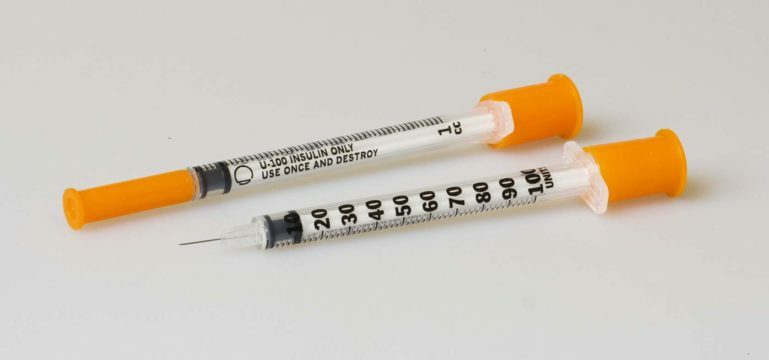Non-diabetes mellitus, unlike sugar, is rarely diagnosed. Its causes are hidden in other mechanisms than in diabetes, although both diseases concern the endocrine system of the body.

Description of the disease
Non-diabetes is a consequence of pathological changes in the pituitary gland. The latter arise because of benign or malignant neoplasms. Other reasons for the development of the disease are neurosurgical interventions that affect the functioning of the pituitary gland. These pathologies lead to a deficiency of the hormone vasopressin, which is also called an antidiuretic hormone.
Twenty percent of patients after the neurosurgical intervention became ill with diabetes insipidus. Genetically this disease is not transmitted, but in the clinical picture it is indicated if the relatives had endocrinological diseases and diabetes insipidus, in particular.
Patients with diabetes insipidus are only one percent of the total number of patients with hormonal abnormalities. The incidence is the same in both sexes, sometimes it is an innate but late diagnosed disease.
Symptoms
Symptoms and treatment of diabetes insipidus in women are established by the attending physician-endocrinologist. The main symptoms of diabetes insipidus are painful thirst and rapid urination.
Polyuria, or increased urge to empty the bladder, is also characterized by an increase in the volume of urine. Most often, the volume increases to ten liters of urine per day, in severe cases, the volume may increase to thirty liters.
Urine is clear, slight salt deposits and suspended particles are visible in it. In addition, a strong thirst and volume of consumed water can reach a daily volume of urine.
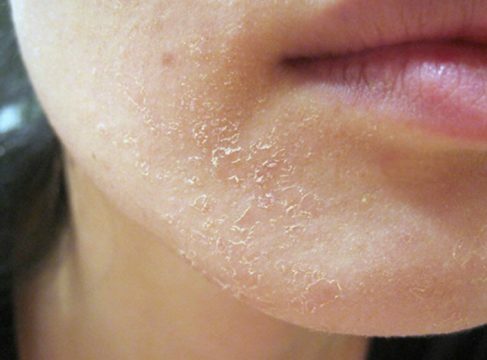
Symptoms of diabetes insipidus in women are also manifested in dry skin, significant salivation, sweating, but reduced appetite. After that, there are headaches, low blood pressure and significant weight loss. Vomiting and diarrhea may develop.
The main signs of diabetes insipidus in female patients:
- Strong thirst;
- Rapid urination;
- Dryness of the skin;
- Headaches;
- Nausea;
- Diarrhea;
- Weight loss for no apparent reason;
- Gastrointestinalisation due to large volume of water being passed.
It should be noted that headaches and nausea are signs of a later diabetes insipidus, which develop on subsequent after the initial stages.
Symptoms during pregnancy
Sometimes signs of diabetes insipidus are found in women during pregnancy. This happens because the bearing of the child provokes serious hormonal changes, which can not but affect the production of vasopressin. Given the fact that the pituitary gland is responsible for several hormones that a woman needs for normal gestation, the signs of diabetes are manifested because of the increased activity of the pituitary gland during this period.
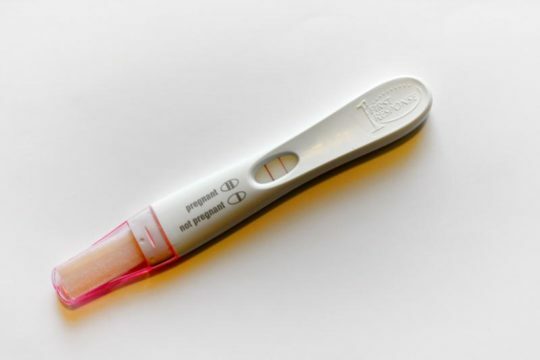
Before pregnancy, the disease can be asymptomatic. During pregnancy, too often urge to urinate, which is mistakenly diagnosed by doctors, like the pressure of the growing uterus and fetus on the bladder. Symptom is associated with neurosis, insomnia or prolonged sleep, neuralgic diseases, emotional instability.
In a child, such a disease can be manifested by enuresis, which is dangerous for late development and delayed puberty. If such symptoms are found, it is better to get the diagnosis right away, despite the fact that the symptoms are similar to the normal manifestations of pregnancy.
Central diabetes
The development of central diabetes insipidus in women can be due to the fact that the kidneys do not have the ability to accumulate fluids. As a result, the patient suffers from two problems at once: strong thirst and frequent urination.
If the patient has the opportunity to consume clean water in unlimited quantities, there is no danger to life. If water consumption is limited, and thirst is not satisfied on time, dehydration of the organism can develop, which in a serious stage develops into a coma.
Chronic diabetes insipidus can lead to a decrease in susceptibility to antidiuretics, which are prescribed to patients as replacement therapy.
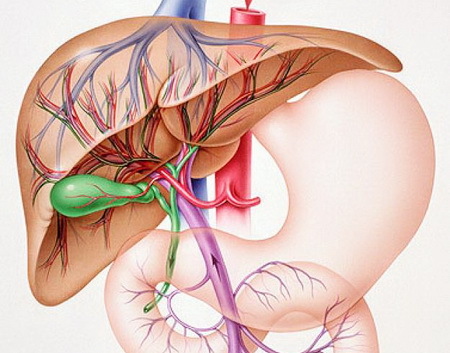
At the same time, a large amount of consumed fluid can lead to problems with biliary tract and stomach lowering.
Idiopathic Diabetes
This is the third most common diabetes insipidus. When diagnosing the disease, no abnormalities and organic changes in the pituitary gland are usually not detected, meanwhile, the hormonal system and substances that depend on the pituitary gland are produced in insufficient quantities. This form of the disease is hereditary.
Kidney Diabetes
The disease can be triggered by pathologies of renal function, as well as abnormalities in the enzymatic system. This is a rather rare form. If such a diagnosis is put to children, the form is considered congenital. It develops because of the mutation of the aquaporin gene or the pathology of the vasopressin receptor.
Adults may develop acquired renal diabetes insipidus, then the causes are renal failure or long-term use of drugs containing lithium.
Possible complications of
Among the dangerous complications of diabetes insipidus can be isolated dehydration. Clinically, this diagnosis sounds like dehydration of the body. When the fluid lost in the urine is not replenished in the body, the dehydration syndrome develops.
He is characterized by weakness, mental disorders, consisting in poor perception of the environment, loss of time, memory failures. Tachycardia develops, diarrhea and vomiting are possible.
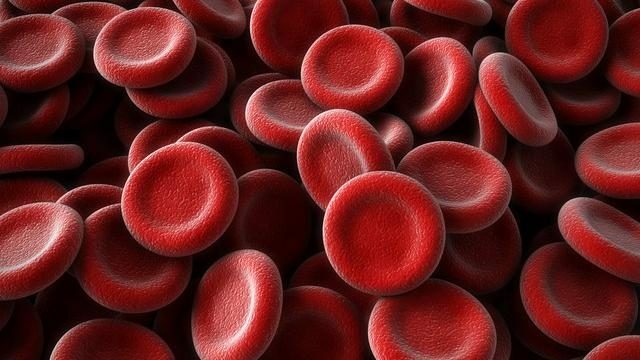
After this, blood begins to thicken, neurological disorders develop, hypotension develops. Without stopping this condition, dehydration can lead to collapse.
Interesting and remarkable is the fact that even with a strong dehydration syndrome, the ability to urinate in the same amounts and quantities as before is retained.
Diagnostic methods
The diagnosis of the disease in women is carried out by an endocrinologist. The first examination that needs to be done is a polyuria examination.
A healthy organism normally excretes no more than three liters of urine per day. In patients with diabetes insipidus, this figure is at least twice as high. In addition, when studying urine, its low density and low specific gravity are found.
Another test requires the patient to abstain from liquids for eight hours. If there is a sharp decrease in weight and the urine density decreases, the diagnosis can be confirmed.
For the exclusion of other diseases with similar symptoms, the following examinations are prescribed:
- Blood test for C-peptide and glucose to exclude diabetes mellitus
- MRI of the brain to exclude tumors in the pituitary region
- Examination from a neurologist to detect possible complications from the CNS
- Kidney ultrasoundand urinalysis to examine the condition of the kidneys, ureters, and bladder.
It is necessary to pass all stages of examination as early as possible in order to prevent complications, gastric emptying, irritable bowel syndrome and dehydration. In addition, the abundance of water in the intestine can lead to the elution of natural microflora and dysbiosis with digestive disorders. Therefore, the passage of diagnostics is an obligatory measure.
Treatment methods
Treatment of diabetes insipidus is divided into general, applicable to all types of diabetes, and also individual for each species.
- With symptomatic diabetes, that is, which is a complication of other diseases, try to first eliminate the root cause. For example, with organic lesions of the pituitary gland or tumors.
- In any form of the disease, substitution therapy is prescribed. Since the antidiuretic hormone is not fully developed, a synthetic analog is prescribed for its reception. It is taken orally or dripped onto the nasal mucosa.
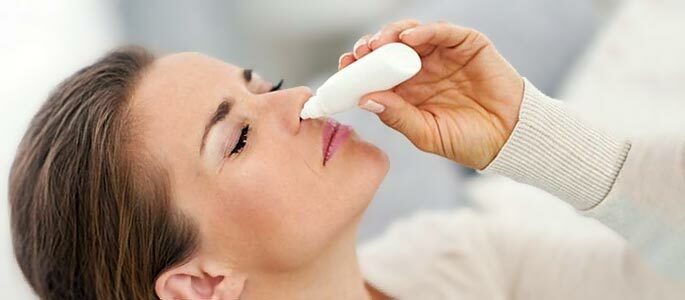
- For the treatment of central diabetes, substitution therapy is not immediately used. They try to activate the secretion of the antidiuretic hormone produced by the body, so they prescribe the appropriate stimulants for hormone production.
- The patient also needs replenishment of the water-salt balance. For this purpose, saline physiological solutions are introduced in large volumes. The combination of saline solutions and diuretics, water is retained in the body, and the number and volume of urination decreases.
Food
The patient's diet should rule out the frequent use of proteins. Peptides have a significant load on so loaded kidneys. In addition, the percentage of fats and carbohydrates in the diet of the patient increases.
Food is taken fractional and often, increase the consumption of vegetables and fruits as a source of natural fiber.
With strong thirst it is recommended to drink not only clean water without gas and dyes, but compotes, juices, home-made fruit drinks. Replace protein foods can be soy, and cook meals cooking, stewing and steaming, infrequently carried away fried foods.
Conclusion
With timely detection, especially during pregnancy, diabetes insipidus does not threaten a person with anything dangerous. Proper treatment, nutrition and maintenance of kidney function will give the patient a calm and healthy life. If you neglect the symptoms of diabetes, its developing stages can lead to dehydration, coma and death.

